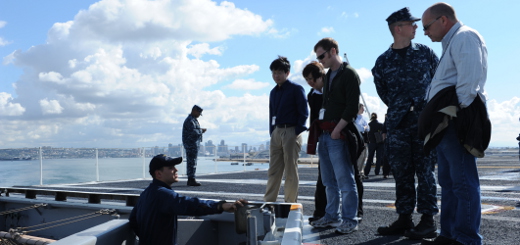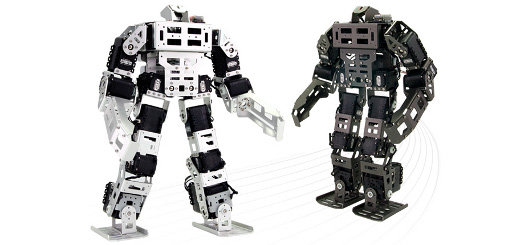Amid talk of air safety, Navy achieves unmanned milestone
As debate about the proper role of humans in the cockpit swirls in the wake of Saturday’s Asiana Airlines plane crash, the Navy achieved an important milestone by completing its first-ever carrier-based arrested landing.
The feat was accomplished on board the USS George H.W. Bush off the coast of Virginia earlier today. According to the Navy, it was the first time a tailless, unmanned autonomous aircraft (in this case the X-47B Unmanned Combat Air System) landed on a modern aircraft carrier.

Andrew Borene, executive director of Robotics Alley and a director at ReconRobotics, says the historic nature of the event shouldn’t be underestimated.
“This landing marks the crossing of a threshold for American military aviation and has strategic importance for national security and energy efficiency through reduced human risk and longer flight times,” Borene said.
The X-47B successfully completed a catapult launch and nine touch-and-gos from the USS George H.W. Bush in May (shown above). Integration of unmanned systems is seen as crucial by the Navy as a way of extending the lifespan of its current fleet of carriers.
“This advanced robotics technology means the U.S. will be extending its ability to project a presence further over the horizon, saving human lives and reducing operational energy consumption,” Borene said. “As with many life-saving military technologies like the Internet and jet engines, autonomous solutions will undoubtedly also enhance civilian life.”
In a statement accompanying the Navy’s announcement, Secretary of the Navy Ray Mabus said that by evolving and integrating technology like the X-47B and its descendants “carriers will remain relevant throughout their 50-year lifespan.”
“We have certainly come a long way in the 102 years since Eugene Ely made the first arrested landing aboard an aircraft carrier. Naval aviators have always been at the forefront of operational and tactical innovation, and today was no exception,” Mabus said. “People make unmanned aviation possible and it is people who will provide the fresh thinking and new ideas so crucial to successes like the X-47B program and the unmanned aircraft of the future.”
The Asiana Airlines crash and other recent high-profile accidents have intensified an ongoing debate about whether it makes sense to trust our lives to human pilots given the sophistication of modern automation. Today’s Wall Street Journal included an opinion piece titled “Bring in the Robots” that argues for turning public transportation completely over to robots to eliminate human error. After years of research and development, advances like these by the Navy may bring us closer to the day when that becomes a reality.
Editor’s note: The Business of Robotics, like Robotics Alley, was founded by ReconRobotics.
[ photo by Tony D. Curtis, courtesy of U.S. Navy ]



